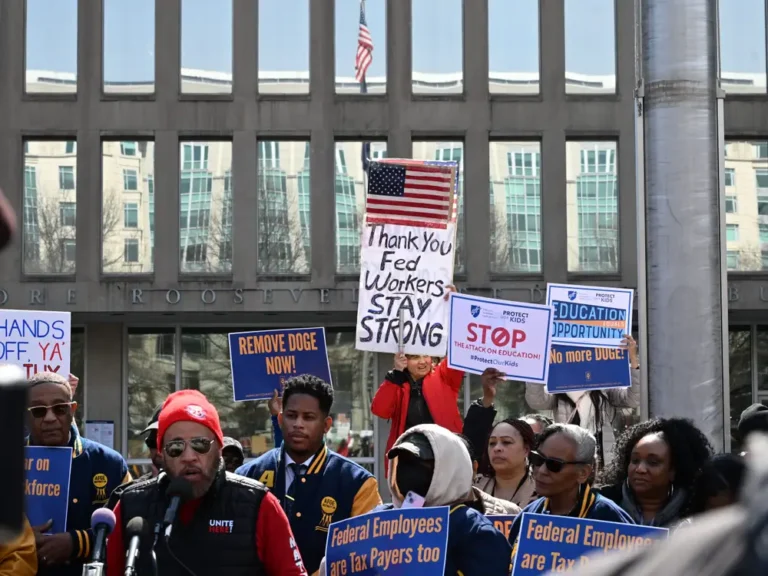JD Vance says pumping more oil will make housing cheaper. Economists say that’s a stretch.

As rising home prices and rents squeeze households across the country, the presidential candidates are weighing in on the housing shortage.
Former President Donald Trump doesn’t list housing among the top 20 priorities on his campaign website, but he and his running mate have argued that some of their top agenda items — including deporting millions of immigrants — would bring down housing costs.
In that spirit, Sen. JD Vance recently promised that a future Trump administration would build millions of homes in part by making energy cheaper. “We’re going to drill, baby, drill, lower energy costs, and that’s going to make it easier to build homes,” he said during an October campaign stop in Nevada.
Housing policy experts and economists disagree, saying lower energy costs would not significantly boost construction or make homes cheaper.
The cost of new housing is largely determined by the availability of workers, the prices of building materials, and government regulations that limit construction. Other policies Trump has promised to enact — including hiking tariffs on a slew of foreign imports and deporting millions of immigrants — are expected to inflate housing costs by increasing the cost of key materials and worsening the labor shortage.
A spokesperson for Vance didn’t immediately respond to a request for comment.
Building materials and tariffs outweigh cheaper oil
Economists say that lower electricity costs and diesel fuel prices would make certain goods and services needed to build housing somewhat cheaper. But they wouldn’t dent the most significant input costs related to building, which are labor and building materials.
“I’m not saying it’s immaterial,” Anirban Basu, chief economist at the construction industry trade group Associated Builders and Contractors, told B-17. “Energy prices are significant, but they’re not as significant as many other inputs.”
The prices of key building materials, including lumber and structural steel, are much more consequential. “When softwood lumber prices took off during the pandemic, it really impacted apartment construction and single-family home building,” Basu said.
Notably, under the Biden administration, the US has produced and exported more crude oil than ever before in the country’s history, even as housing costs have soared.
Tariffs imposed by both the Trump and Biden administrations on goods like Canadian lumber aren’t helping, Andrew Justus, a housing policy analyst at the Niskanen Center, a nonpartisan think tank, told B-17. And Trump has promised to dramatically hike tariffs if he’s elected.
“When you think about what is specifically within the government’s purview, as far as bringing down costs for building homes, one of the easiest things they could do is reduce the extra tax that they levy on the most basic of building materials,” Justus said.
Labor costs and cutting red tape are also key
Labor costs are generally growing as a portion of overall construction costs, Basu said. This is largely a result of a national construction worker shortage, particularly among skilled workers, and lagging productivity in the industry. While labor productivity has improved in most sectors of the economy over the last half-century, US construction productivity has declined.
“If you look at a typical construction job site, it does not look that different from what it might’ve looked like five or six decades ago,” Basu said.
Vance has also said that Trump’s plan to deport millions of immigrants would lower demand for housing and, thereby, slow rising home prices and rents. But economists say immigration isn’t a major reason for higher housing costs, and because such a large portion of construction workers are immigrants, mass deportations would slow home construction and push prices up.
“We just don’t have the supply of construction labor that we need, and any sort of dramatic reduction in our labor would just make that even worse,” Nolan Gray, a city planner and research director for California YIMBY, told B-17.
But the biggest obstacle to improving housing affordability is local and state regulation. Land-use laws that block denser forms of housing like duplexes or apartment buildings in favor of detached single-family homes make it harder to build cheaper housing.
“A lot of these suboptimal outcomes come from very poor zoning decisions which tend to favor downzoning of properties, as opposed to embracing density,” Basu said.
The Trump campaign has said it will cut regulations that stymie building, with Vance saying they’ll “stop the ridiculous regulations that make it harder for our construction companies and our workers to build homes” at the Nevada campaign stop.
But the campaign hasn’t released detailed plans — and when Trump was president, he pushed to protect single-family zoning, which keeps housing more expensive. And while Vice President Kamala Harris has put forward plans to incentivize deregulation as part of her more explicit housing agenda, most land-use and building regulations are controlled by state and local governments.






